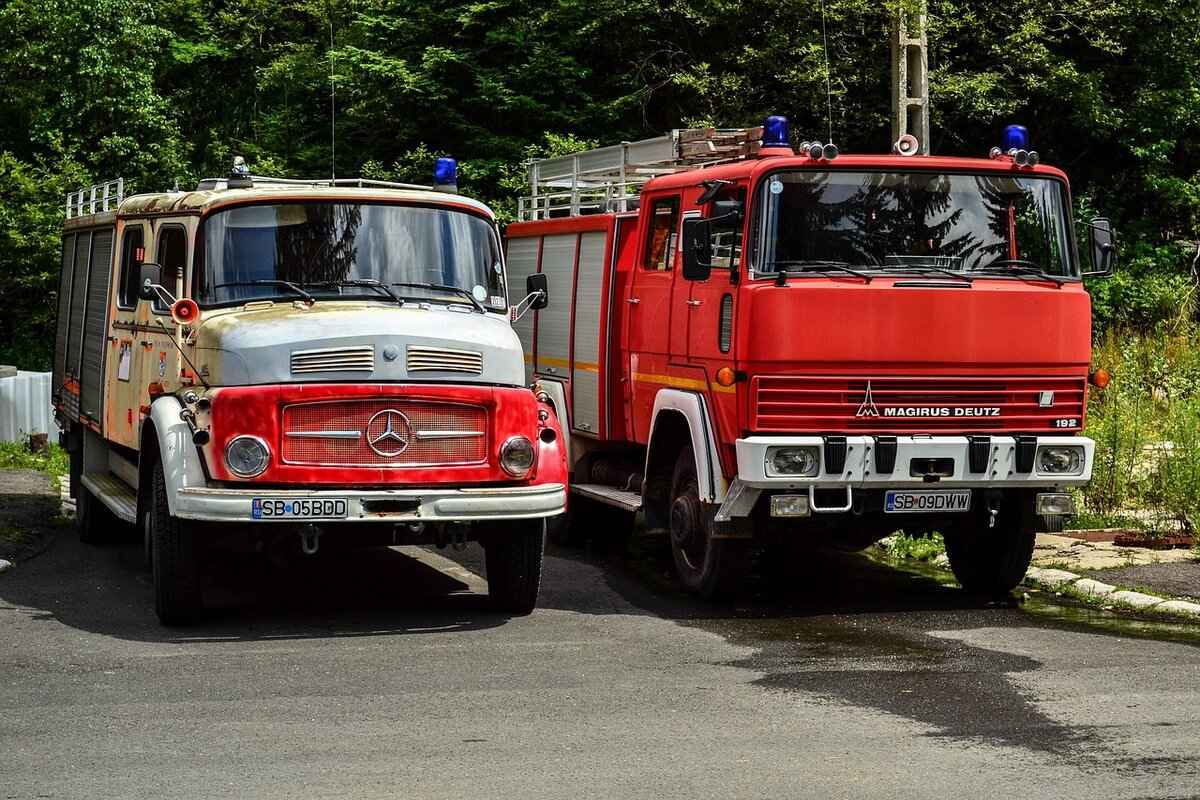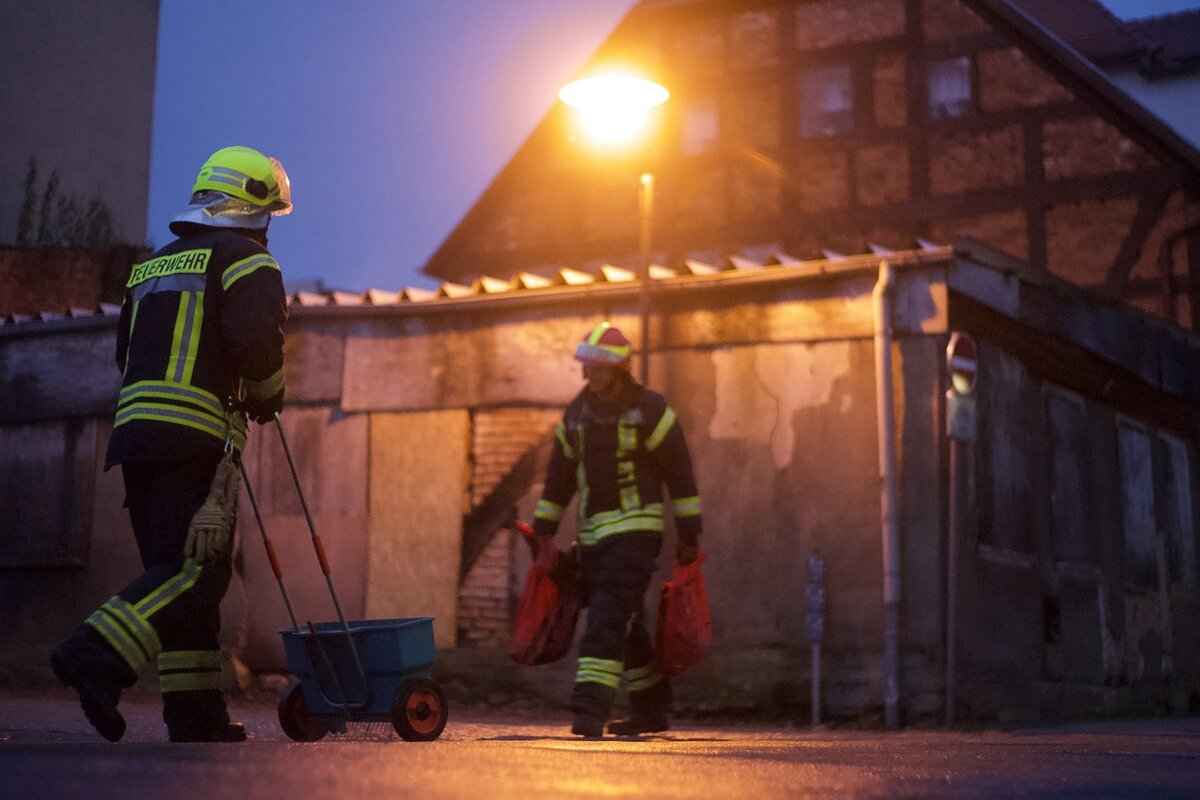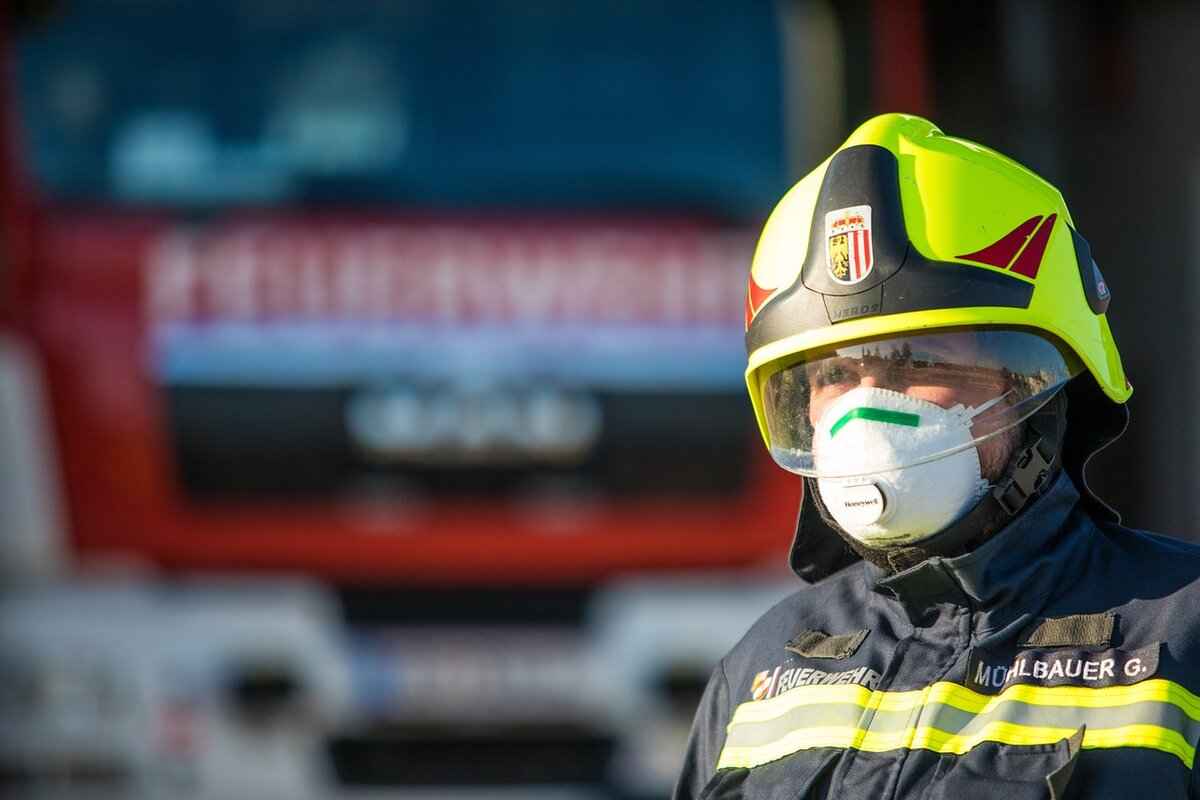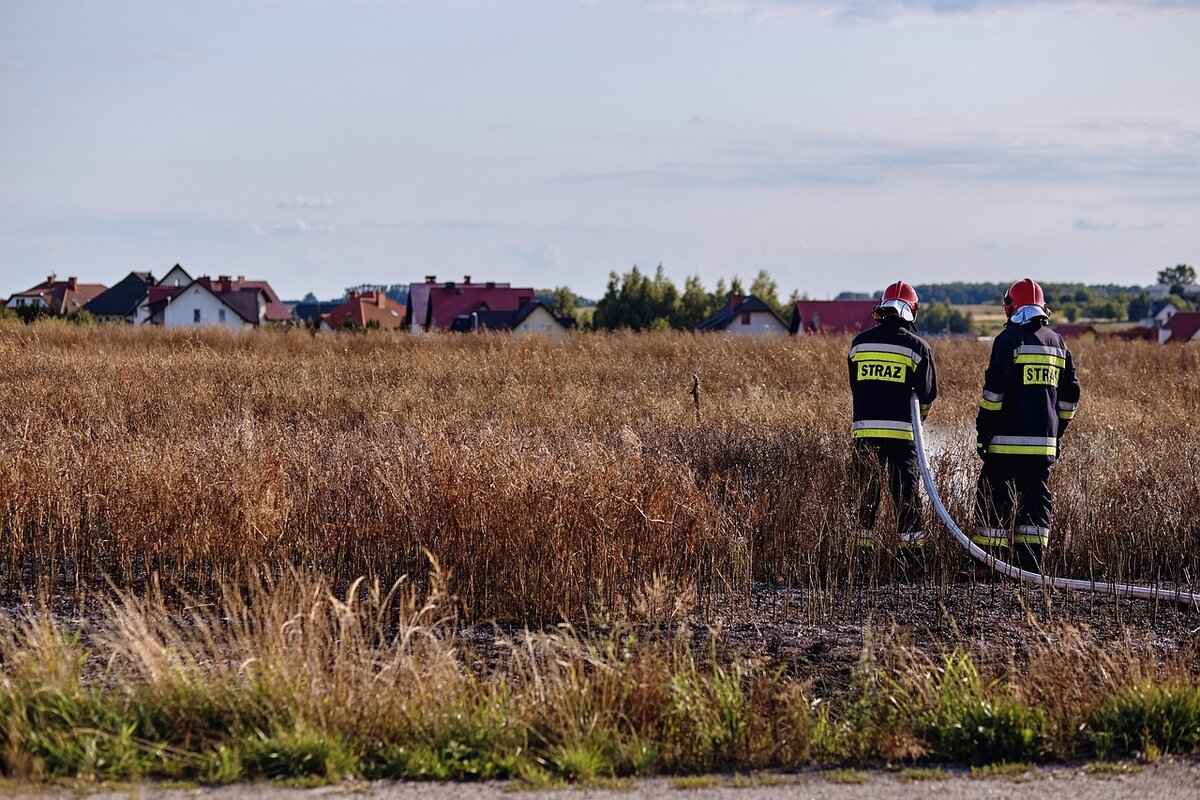This article explores the critical role of accountability boards in fire scenes, detailing their implementation, benefits, and best practices to enhance safety and efficiency during firefighting operations.
What is an Accountability Board?
An accountability board is a vital tool designed to track personnel and resources during emergency situations, particularly in firefighting. This board typically includes a list of personnel, their assigned roles, and their current status on the fire scene. Understanding its components and functions is essential for effective management and ensuring that all firefighters are accounted for, ultimately enhancing safety and operational efficiency.
Importance of Accountability in Firefighting
Accountability in firefighting is critical. It not only ensures the safety of firefighters but also contributes to the success of operations. In high-stakes environments like fire scenes, the ability to track personnel and resources can mean the difference between life and death. An accountability board helps in maintaining a clear overview of who is on the scene, where they are located, and what tasks they are performing, thereby reducing confusion and enhancing coordination.
Enhancing Safety for Firefighters
Safety is paramount in firefighting. Accountability boards play a crucial role in monitoring personnel, significantly reducing the risk of injuries. By ensuring that all team members are accounted for, these boards help in making informed decisions during emergencies, such as when to initiate rescues or when to withdraw personnel from hazardous situations. This proactive approach to safety is essential in protecting the lives of firefighters.
Improving Operational Efficiency
Operational efficiency is vital during emergencies. Accountability boards streamline communication and resource allocation, enabling faster response times and better coordination among teams. By providing real-time updates on personnel status and resource availability, these boards facilitate quick decision-making and ensure that firefighting efforts are as effective as possible.
Key Components of an Accountability Board
An effective accountability board consists of several components that facilitate tracking and communication. Essential elements include:
- Personnel Tracking System: This system allows for the real-time tracking of firefighters on the scene. It can involve both digital solutions, such as mobile applications, and manual systems that require regular updates.
- Resource Management Features: These features help manage equipment and supplies efficiently, ensuring that all necessary resources are available when needed.
How to Set Up an Accountability Board
Setting up an accountability board requires careful planning and execution. Key steps include:
- Choosing the Right Location: Selecting a strategic position for the accountability board is crucial. It should be easily visible and accessible to all team members to maximize its effectiveness.
- Training Personnel on Usage: Comprehensive training is essential for successful implementation. Firefighters and other personnel must understand how to effectively use the accountability board during operations.
Best Practices for Using an Accountability Board
Implementing best practices enhances the effectiveness of accountability boards. Some strategies include:
- Regular Updates and Maintenance: Keeping information current and accurate is vital for reliable tracking of personnel and resources.
- Integration with Incident Command Systems: Combining accountability boards with incident command systems improves overall fire scene management and coordination.
Challenges and Solutions in Accountability Board Usage
Despite their benefits, challenges can arise when using accountability boards. Common issues include:
- Dealing with Communication Breakdowns: Strategies to overcome communication challenges are essential to ensure that all team members are informed and accountable.
- Addressing Resistance to Change: Fostering a culture of accountability and encouraging buy-in from all personnel involved is crucial for successful adoption of new systems.
Case Studies: Successful Implementation of Accountability Boards
Examining real-life examples can provide valuable insights into the successful implementation of accountability boards. Urban fire responses often present unique challenges, and specific cases have shown how accountability boards significantly improved safety and efficiency in these densely populated areas. Similarly, rural firefighting scenarios have demonstrated the effectiveness of accountability boards in addressing unique challenges faced in less populated environments.
Future Trends in Accountability Boards
The future of accountability boards is evolving with technology. Emerging trends include:
- Technological Advancements: New technologies, such as mobile applications and RFID tracking, are enhancing the functionality of accountability boards.
- Increased Focus on Training and Education: Ongoing training initiatives are being developed to ensure that firefighters are well-prepared to use accountability boards effectively.
By understanding and implementing the insights provided in this article, fire departments can significantly enhance their operational effectiveness and safety during fire scenes through the use of accountability boards.

What is an Accountability Board?
An accountability board serves as a fundamental component in managing emergencies, particularly in the context of firefighting. It is designed to ensure that all personnel and resources are effectively tracked during operations, which is critical for maintaining safety and operational efficiency. Understanding the intricacies of an accountability board can significantly enhance fire scene management.
An accountability board is a visual tool that provides real-time tracking of personnel and equipment during emergency situations. It typically consists of a board or digital interface where the names of firefighters, their assigned roles, and their status are displayed. This allows incident commanders and team leaders to maintain an accurate count of who is present on the scene and who may still be inside a hazardous environment.
The board can be set up using various methods, including:
- Manual Systems: Traditional accountability boards often use paper or magnetic name tags that can be moved around to indicate personnel status.
- Digital Solutions: Modern accountability boards may utilize software applications that allow for real-time updates and tracking via mobile devices or tablets.
Regardless of the method used, the primary goal of an accountability board is to provide a clear overview of personnel deployment and resource allocation. This is particularly important in high-stakes environments like fire scenes, where the risk of injury or loss of life can be significant.
To function effectively, an accountability board must include several key components:
- Personnel Lists: A comprehensive list of all personnel on the scene, including their roles and responsibilities.
- Status Indicators: Clear markings or indicators that show whether personnel are accounted for, in action, or missing.
- Resource Inventory: An inventory of equipment and supplies available on the scene, ensuring that all resources are accounted for and can be accessed when needed.
These elements work together to create a comprehensive overview of the situation, allowing for better decision-making and resource management during emergencies.
Accountability is crucial in firefighting for several reasons:
- Safety: Ensuring that all firefighters are accounted for reduces the risk of injuries and fatalities.
- Coordination: An accountability board facilitates better communication among team members and command staff, enhancing operational efficiency.
- Resource Management: By keeping track of equipment and personnel, incident commanders can make informed decisions about resource allocation.
In summary, an accountability board is not just a tool; it is an essential part of a comprehensive safety strategy in firefighting operations. Its effective implementation can lead to improved safety outcomes and operational efficiency, ultimately saving lives and resources.

Importance of Accountability in Firefighting
Accountability in firefighting is a critical component that ensures both the safety of firefighters and the overall success of operations. In high-stakes environments such as fire scenes, the need for precise tracking and communication cannot be overstated. This section delves into the multifaceted importance of accountability, exploring how it enhances safety, improves operational efficiency, and fosters a culture of responsibility among firefighting personnel.
- Enhancing Safety for Firefighters
Safety is paramount in firefighting. The chaotic nature of fire scenes, combined with the inherent risks involved, necessitates a robust accountability system. By utilizing accountability boards, fire departments can monitor personnel effectively, ensuring that all firefighters are accounted for at all times. This proactive approach helps to minimize the risk of injuries and fatalities. For instance, if a firefighter becomes trapped or disoriented, immediate identification through an accountability system can facilitate a prompt rescue operation. Moreover, regular safety drills that incorporate accountability practices can reinforce the importance of being aware of each team member’s location and status.
- Improving Operational Efficiency
In emergencies, operational efficiency is crucial. Accountability boards streamline communication and resource allocation, enabling faster response times and better coordination among teams. When every firefighter knows their responsibilities and the status of their colleagues, it enhances teamwork and reduces confusion. For example, during a large-scale fire, an accountability board can provide real-time updates on which teams are actively engaged and where additional manpower may be needed. This organized approach allows incident commanders to make informed decisions quickly, ultimately improving the effectiveness of firefighting operations.
- Fostering a Culture of Responsibility
Accountability not only pertains to tracking personnel but also extends to fostering a culture of responsibility within the firefighting community. When firefighters understand the importance of being accountable for their actions and their teammates, it cultivates a sense of ownership and pride in their work. Training sessions that emphasize accountability can help instill these values, encouraging firefighters to take their roles seriously. This cultural shift can lead to improved morale and a stronger commitment to safety protocols, which are vital in high-pressure situations.
- Facilitating Better Communication
Effective communication is essential during firefighting operations. Accountability boards serve as a central hub for information sharing, ensuring that all team members are on the same page. By clearly displaying the status of personnel and resources, these boards reduce the likelihood of miscommunication. For instance, if a team is assigned a specific task, the accountability board can indicate when that task is completed, allowing for seamless transitions to subsequent operations. This clarity not only boosts efficiency but also enhances the safety of all personnel involved.
- Adapting to Changing Conditions
Fire scenes are dynamic environments that can change rapidly. Accountability systems must be adaptable to these changing conditions. As new information becomes available, such as the arrival of additional resources or changes in the fire’s behavior, the accountability board must reflect these updates in real-time. This adaptability ensures that all firefighters are aware of the current situation, allowing them to respond effectively to evolving challenges. Training personnel on how to update and interpret accountability boards is critical for maintaining this flexibility.
In summary, accountability in firefighting is not merely a procedural formality; it is a fundamental element that significantly impacts the safety and effectiveness of operations. By enhancing safety, improving operational efficiency, fostering a culture of responsibility, facilitating better communication, and adapting to changing conditions, accountability systems play a vital role in successful firefighting efforts. Fire departments that prioritize accountability are better positioned to protect their personnel and respond effectively to emergencies.
Enhancing Safety for Firefighters
In the high-stakes environment of firefighting, the safety of personnel is of utmost importance. One of the most effective ways to enhance safety is through the use of accountability boards. These boards serve as critical tools for monitoring and managing the presence of firefighters on the scene, ensuring that every team member is accounted for and reducing the risk of injuries.
Accountability boards are designed to track the location and status of personnel during firefighting operations. This tracking is essential for several reasons:
- Real-time Monitoring: Accountability boards provide real-time updates on who is on the scene and their assignments. This immediate visibility allows incident commanders to make informed decisions quickly.
- Enhanced Communication: By clearly displaying personnel assignments and status, accountability boards facilitate better communication among team members. This minimizes confusion and ensures that everyone knows their roles and responsibilities.
- Emergency Response Coordination: In the event of an emergency, such as a sudden flare-up of the fire or a firefighter in distress, accountability boards allow for swift coordination of rescue efforts. Knowing who is available and where they are can save lives.
Moreover, accountability boards contribute to creating a culture of safety within firefighting teams. When personnel understand that their location and status are being monitored, they are more likely to adhere to safety protocols and communicate effectively with their teammates. This culture is vital for maintaining high safety standards, especially in chaotic situations.
Another significant advantage of accountability boards is their role in post-incident analysis. After a firefighting operation, reviewing the data collected from the accountability board can provide valuable insights into the effectiveness of the operation. This analysis can highlight areas for improvement, such as training needs or procedural adjustments, ultimately leading to enhanced safety in future operations.
Implementing an accountability board is not without its challenges. Fire departments must ensure that all personnel are adequately trained on how to use these boards effectively. Regular training sessions can help reinforce the importance of accountability and familiarize team members with the equipment. Additionally, the physical placement of the accountability board is crucial; it should be located in a visible and accessible area to maximize its effectiveness.
In conclusion, enhancing safety for firefighters is a multifaceted endeavor that significantly benefits from the use of accountability boards. By providing real-time monitoring, improving communication, coordinating emergency responses, and fostering a safety culture, these boards play a pivotal role in protecting the lives of firefighters on the front lines. As technology continues to evolve, the integration of advanced tracking systems and training programs will further bolster the effectiveness of accountability boards, ensuring that firefighter safety remains a top priority.
Improving Operational Efficiency
In emergency situations, particularly during firefighting operations, operational efficiency is not just a goal; it is a necessity. The ability to respond quickly and effectively can mean the difference between life and death, not only for victims but also for the firefighters themselves. This section delves into how accountability boards play a pivotal role in enhancing operational efficiency, ensuring that teams can communicate effectively and allocate resources judiciously.
One of the primary functions of an accountability board is to streamline communication. During chaotic emergencies, clear and concise communication is crucial. Accountability boards provide a centralized location where all personnel and resources can be tracked in real-time. This visibility allows team leaders to quickly assess the situation and make informed decisions. For instance, if a firefighter is unaccounted for, the team can immediately initiate a search, rather than wasting precious time trying to deduce who is missing.
Moreover, accountability boards facilitate better resource allocation. In firefighting operations, resources such as water, equipment, and personnel are often limited. An accountability board helps ensure that these resources are deployed where they are most needed. By having a clear overview of what resources are available and where they are located, incident commanders can make swift decisions that optimize the use of these resources, thereby improving overall operational efficiency.
Additionally, the integration of technology into accountability boards can further enhance their effectiveness. Digital accountability boards can provide real-time updates and alerts, ensuring that all team members are aware of changes in the situation. For example, if a new fire breaks out or if a resource becomes available, the digital board can instantly notify all relevant personnel. This capability not only speeds up response times but also enhances coordination among different teams operating at the scene.
Training also plays a crucial role in improving operational efficiency. Firefighters must be well-trained in using accountability boards to maximize their potential. Regular drills and training sessions can familiarize personnel with the board’s layout and functions, ensuring that everyone knows how to use it effectively during an emergency. This preparedness can significantly reduce confusion and mistakes when every second counts.
Finally, accountability boards contribute to a culture of accountability and responsibility within firefighting teams. When firefighters understand the importance of being accountable for their actions and whereabouts, they are more likely to communicate effectively and work collaboratively. This culture not only improves operational efficiency but also enhances safety, as team members are more vigilant and aware of their surroundings.
In summary, accountability boards are essential tools in improving operational efficiency during firefighting operations. By streamlining communication, optimizing resource allocation, leveraging technology, providing thorough training, and fostering a culture of accountability, these boards enable faster response times and better coordination among teams. As the challenges of firefighting evolve, so too must the strategies employed by fire departments to ensure the safety and effectiveness of their operations.

Key Components of an Accountability Board
An accountability board is an essential tool for managing personnel and resources effectively during firefighting operations. Understanding the key components of an accountability board can significantly enhance safety and operational efficiency at fire scenes. Below, we explore these components in detail.- Personnel Tracking System
- Manual Systems: Traditional methods involve using check-in/check-out sheets, where firefighters sign in upon arrival and sign out when they leave the scene. While reliable, this method can be time-consuming and prone to human error.
- Digital Solutions: Many fire departments are now adopting digital tracking solutions, such as mobile applications or software that allow for real-time tracking of personnel. These systems can provide instant updates and alerts, ensuring a more efficient accountability process.
- RFID Technology: Radio Frequency Identification (RFID) tags can be issued to each firefighter, allowing for automatic tracking as they move in and out of designated areas. This technology minimizes the risk of losing track of personnel during chaotic situations.
- Resource Management Features
- Equipment Tracking: Keeping track of all firefighting equipment, such as hoses, ladders, and protective gear, is essential. An accountability board can include a list of all equipment on-site, along with its condition and location.
- Supply Management: An organized system for managing supplies, such as water, foam, and other firefighting agents, ensures that resources are readily available when needed. This includes monitoring usage and replenishing supplies as necessary.
- Mapping Resources: Visual aids, such as maps or layout diagrams of the fire scene, can help teams locate resources quickly. These maps can indicate where equipment is stored and highlight areas of high risk.
- Communication Tools
- Two-Way Radios: Reliable communication devices allow firefighters to stay in contact with each other and with command personnel. This is essential for relaying information quickly and efficiently.
- Visual Signals: Utilizing visual signals, such as colored flags or lights, can help convey important messages without the need for verbal communication, which may be difficult in noisy environments.
- Incident Command System Integration: Integrating the accountability board with the incident command system ensures that all team members are aware of their roles and responsibilities during operations. This promotes a unified response to emergencies.
A robust personnel tracking system is the backbone of any accountability board. This system ensures that all firefighters on the scene are accounted for at all times. There are various methods for tracking personnel, including:
Effective resource management is crucial during firefighting operations. The accountability board should include features that help manage equipment and supplies efficiently:
Effective communication is vital in high-pressure situations. An accountability board should incorporate tools that facilitate clear communication among team members:
By incorporating these key components into an accountability board, fire departments can improve their ability to track personnel and manage resources effectively. This not only enhances safety for firefighters but also contributes to the overall success of firefighting operations.
Personnel Tracking System
A personnel tracking system is an essential component of accountability boards in firefighting operations. This system ensures that every firefighter is accounted for during emergency situations, significantly enhancing safety and operational efficiency. Below, we explore various methods for tracking personnel on the scene, including both digital solutions and manual systems.
- Digital Solutions: The advent of technology has revolutionized how personnel tracking is executed. Digital solutions such as mobile applications and GPS tracking systems enable real-time monitoring of firefighters’ locations. These applications often include features that allow incident commanders to see where each team member is deployed, which is crucial for making informed decisions during chaotic situations.
- RFID Technology: Radio Frequency Identification (RFID) tags are increasingly used in firefighting. Firefighters can wear RFID tags that communicate with a central system, providing automatic updates on their location. This technology minimizes the risk of human error associated with manual tracking and ensures that personnel can be located quickly in case of an emergency.
- Manual Systems: While digital solutions are becoming more prevalent, manual tracking systems still play a vital role, especially in areas with limited technological infrastructure. Traditional methods involve using a physical accountability board where personnel check in and out. This method requires clear communication and diligent record-keeping to ensure accuracy.
- Hybrid Approaches: Many fire departments are adopting hybrid approaches that combine both digital and manual systems. For instance, a digital tracking system can be used alongside a physical board, allowing for redundancy. This ensures that if one system fails, the other can still provide crucial information about personnel locations.
In addition to these tracking methods, effective communication is paramount. It is essential for all personnel to be trained on the tracking systems in place. Regular drills and training sessions can familiarize firefighters with the technology and protocols, ensuring that they can use the systems efficiently during high-stress situations.
Furthermore, the integration of personnel tracking systems with incident command systems enhances overall situational awareness. This integration allows for better coordination among teams and facilitates quicker decision-making. When all personnel are tracked accurately, incident commanders can allocate resources more efficiently, ultimately leading to improved outcomes in firefighting operations.
In summary, a robust personnel tracking system is fundamental for accountability boards in firefighting. By utilizing a combination of digital solutions, RFID technology, manual systems, and effective training, fire departments can significantly enhance their operational readiness and ensure the safety of their personnel on the scene.
Resource Management Features
Effective resource management is a cornerstone of successful firefighting operations. In high-pressure environments, such as fire scenes, the ability to track and manage equipment and supplies is crucial for ensuring that resources are available when needed. This article delves into how accountability boards facilitate resource management, enhancing overall operational effectiveness during firefighting efforts.
One of the primary functions of an accountability board is to provide a centralized location for tracking all resources on-site. This includes everything from fire hoses and hydrants to personal protective equipment (PPE) and medical supplies. By having a clear overview of available resources, incident commanders can make informed decisions about where to allocate personnel and equipment.
Streamlining Equipment Tracking
- Visual Inventory Management: Accountability boards often utilize visual aids, such as color-coded tags or magnetic boards, to represent the status of various resources. This allows for quick assessments of what is available, what is in use, and what may need replenishing.
- Real-time Updates: Regular updates to the accountability board ensure that information remains current. This can be facilitated through digital solutions, where personnel can log equipment usage in real-time, thus minimizing the risk of miscommunication.
Ensuring Availability of Supplies
In the midst of a firefighting operation, the availability of supplies can significantly impact the outcome. Accountability boards help ensure that essential items are stocked and ready for use. This is achieved through:
- Pre-incident Inventory Checks: Before heading into a situation, teams can conduct inventory checks to confirm that all necessary supplies are in place and functional.
- Emergency Supply Lists: Having a predefined list of critical supplies helps in quickly identifying what is needed during a firefighting operation. Accountability boards can display these lists prominently, ensuring that all team members are aware and can act swiftly.
Facilitating Communication Among Teams
Effective communication is vital for successful resource management. Accountability boards serve as a communication hub, allowing teams to:
- Share Resource Status: Teams can communicate the status of their resources, such as whether equipment is operational or requires maintenance, which helps prevent delays in response.
- Coordinate Resource Requests: If a team requires additional resources, they can use the accountability board to signal their needs, allowing for efficient redistribution of supplies without wasting time.
Training and Familiarization
To maximize the effectiveness of accountability boards in resource management, it’s essential that all personnel are trained on their use. This includes understanding how to:
- Update Information: Training should cover how to accurately update the board with current resource statuses.
- Interpret Data: Firefighters need to be able to read and understand the information presented on the board quickly, which can be achieved through regular drills and simulations.
In summary, the integration of accountability boards into firefighting operations enhances resource management significantly. By providing a structured approach to tracking equipment and supplies, these boards ensure that resources are readily available, thereby improving the safety and efficiency of firefighting efforts. As technology evolves, the potential for accountability boards to further streamline resource management will continue to grow, making them an invaluable asset in fire scene operations.

How to Set Up an Accountability Board
Setting up an accountability board is a critical step in ensuring safety and efficiency during firefighting operations. This process requires careful planning and execution to create a system that effectively tracks personnel and resources on the fire scene. Below is a detailed guide that outlines the essential steps involved in establishing an effective accountability board.
Step 1: Assess the SceneBefore setting up an accountability board, it is crucial to assess the fire scene. Determine the size of the area, the number of personnel involved, and the resources available. This assessment will help in designing an accountability board that meets the specific needs of the operation. Consider the layout of the scene, potential hazards, and the flow of communication among team members.
Step 2: Choose the Right LocationThe location of the accountability board is vital for its effectiveness. Select a spot that is easily accessible and visible to all team members. Ideally, it should be positioned near the command post or a central point where personnel frequently gather. Ensure that the board is protected from environmental factors, such as wind and rain, which could damage it or hinder visibility.
Step 3: Design the BoardThe design of the accountability board should be user-friendly and clearly organized. Use large, legible fonts and bright colors to enhance visibility. Consider incorporating sections for personnel names, roles, entry and exit times, and equipment status. A well-structured board will facilitate quick updates and easy tracking of personnel and resources.
Step 4: Implement Tracking MethodsEstablish a reliable tracking method that suits the operational environment. This could include manual systems like checklists or digital solutions such as mobile applications. Ensure that all personnel are trained on how to use these tracking methods effectively. Regular updates are crucial to maintaining accurate records, so designate a responsible individual to oversee this process.
Step 5: Conduct Training SessionsTraining is essential for the successful implementation of the accountability board. Organize training sessions for all personnel involved in firefighting operations. These sessions should cover the purpose of the accountability board, how to update it, and the importance of accurate tracking. Engaging training methods, such as simulations or hands-on practice, can enhance understanding and retention.
Step 6: Establish Communication ProtocolsEffective communication is key to the successful operation of an accountability board. Establish clear protocols for how information will be communicated among team members. This includes regular updates during operations and procedures for reporting any discrepancies or emergencies. Encourage open dialogue to ensure that everyone understands their responsibilities related to the accountability board.
Step 7: Monitor and AdjustOnce the accountability board is in place, continuously monitor its effectiveness. Gather feedback from team members on its usability and make adjustments as necessary. Regularly review the information being tracked to identify any areas for improvement. This iterative approach will help refine the system and enhance its overall effectiveness in future operations.
ConclusionSetting up an accountability board is a vital process that can significantly enhance safety and efficiency during firefighting operations. By following these steps, fire departments can ensure that their accountability boards are effective tools for tracking personnel and resources, ultimately contributing to successful outcomes in emergency situations.
Choosing the Right Location
Choosing the Right Location for an Accountability BoardWhen it comes to emergency response, particularly in firefighting, the location of the accountability board is crucial for its effectiveness. A well-placed accountability board enhances visibility, accessibility, and overall efficiency during operations. In this section, we will explore the key factors to consider when selecting an optimal location for your accountability board.
- Visibility: The accountability board should be positioned in a place that is easily visible to all team members. This ensures that firefighters can quickly check in and out, reducing the risk of personnel being unaccounted for during critical moments.
- Accessibility: The board must be easily accessible to all personnel, including those in high-stress situations. Consider placing it near the incident command post or at a central location where team members frequently pass by.
- Protection from Elements: Fire scenes can be chaotic, and environmental factors can hinder the functionality of an accountability board. Choose a location that offers some protection from weather conditions, such as rain or extreme heat, to keep the board and its materials intact.
- Proximity to High Activity Areas: Positioning the accountability board near areas of high activity, such as entry and exit points, allows for quick updates on personnel movements. This proximity ensures that accountability is maintained without disrupting firefighting efforts.
- Clear Pathways: Ensure that the area around the accountability board is free from obstructions. Clear pathways allow for quick access, especially in emergencies where every second counts.
In addition to these factors, it’s essential to involve team members in the decision-making process. Engaging firefighters in discussions about the board’s location can provide valuable insights based on their experiences and preferences. This collaborative approach fosters a sense of ownership and accountability among the team.
Moreover, regular evaluations of the board’s location should be conducted. As fire scenes evolve, the initial placement may become less effective. Being adaptable and willing to relocate the accountability board as needed can significantly enhance its functionality.
Lastly, consider the integration of technology in your accountability board setup. Digital boards or mobile applications can be placed in strategic locations, allowing for real-time updates and tracking. This modern approach not only improves accessibility but also aligns with the increasing reliance on technology in emergency response.
In summary, choosing the right location for an accountability board is a multifaceted process that requires careful consideration of visibility, accessibility, protection from elements, proximity to high-activity areas, and clear pathways. By prioritizing these factors and involving team members in the decision-making process, fire departments can ensure that their accountability boards are effective tools for enhancing safety and operational efficiency during firefighting operations.
Training Personnel on Usage
Training is a fundamental aspect of ensuring that firefighters and emergency personnel can effectively utilize accountability boards during operations. An accountability board serves as a pivotal tool in tracking personnel and resources, making it essential for all team members to be well-versed in its operation. This section outlines best practices for training personnel, ensuring that they are equipped with the necessary skills and knowledge to maximize the board’s effectiveness in high-pressure situations.
- Understanding the Accountability Board: Before diving into practical training, it is crucial for personnel to comprehend what an accountability board is and how it functions. Training sessions should begin with an overview of the board’s components, including personnel tracking systems and resource management features. This foundational knowledge sets the stage for effective usage.
- Hands-On Training Sessions: Practical, hands-on training is essential for reinforcing theoretical knowledge. Conducting simulations where personnel can practice using the accountability board in controlled environments helps build confidence. This approach allows firefighters to familiarize themselves with the board’s layout and functionality, ensuring they can operate it smoothly during real emergencies.
- Scenario-Based Drills: Implementing scenario-based drills can significantly enhance training effectiveness. These drills should mimic real-life firefighting situations where personnel must use the accountability board to track team members and resources. By practicing in these scenarios, firefighters can develop quick decision-making skills and learn to adapt to dynamic environments.
- Emphasizing the Importance of Communication: Communication is key in any emergency response. Training should emphasize the role of the accountability board in facilitating communication among team members. Personnel should be trained on how to relay information effectively using the board, ensuring that everyone is aware of their roles and responsibilities.
- Regular Refresher Courses: To maintain proficiency, regular refresher courses should be scheduled. These sessions can cover updates to the accountability board’s features, review best practices, and provide a platform for personnel to share experiences and insights. Continuous education helps reinforce the importance of accountability in firefighting.
- Feedback Mechanisms: Establishing feedback mechanisms allows personnel to voice concerns and suggest improvements regarding the accountability board’s usage. This feedback can be invaluable in refining training methods and ensuring that all team members feel comfortable and competent in their roles.
Incorporating these best practices into training programs will ensure that firefighters and emergency personnel are not only familiar with the accountability board but also adept at utilizing it effectively during operations. The goal is to create a culture of accountability where every team member understands their responsibilities and is prepared to act decisively in high-stakes situations. By investing in comprehensive training, fire departments can enhance safety, improve operational efficiency, and ultimately save lives during emergency responses.

Best Practices for Using an Accountability Board
Implementing best practices is essential for maximizing the effectiveness of accountability boards during fire scenes. These boards serve as vital tools to ensure that all personnel are accounted for and that resources are managed efficiently. Below are strategies that can help fire departments utilize accountability boards to their fullest potential.
- Regular Updates and Maintenance
One of the most critical practices is to ensure that the information on the accountability board is continually updated. Regular updates should be scheduled at the beginning and end of each operational phase, as well as during significant transitions. This practice not only keeps the data accurate but also helps to prevent confusion and miscommunication among team members. Fire departments should establish a protocol for updating the board, ensuring that all personnel are trained to contribute to this process. By maintaining current information, teams can quickly identify who is on the scene, who has completed their tasks, and who may still be in need of assistance.
- Integration with Incident Command Systems
Integrating accountability boards with existing incident command systems can significantly enhance communication and coordination during fire operations. When these systems are linked, updates on personnel and resources can be shared in real-time, allowing for a more comprehensive overview of the situation. This integration facilitates better decision-making and resource allocation, ensuring that all team members are aware of their responsibilities and the status of the operation. Fire departments should prioritize training on how to effectively use these integrated systems, ensuring that all personnel are comfortable with the technology.
- Training Personnel on Usage
Effective training is crucial for the successful implementation of accountability boards. Fire departments should develop training sessions that focus on the importance of accountability and the operational procedures for using the board. This training should include hands-on practice, allowing personnel to become familiar with the board’s layout and functionality. Regular refresher courses can also be beneficial, keeping the team updated on any changes in procedures or technology. By investing in comprehensive training, departments can cultivate a culture of accountability that enhances overall safety and efficiency.
- Clear Roles and Responsibilities
Establishing clear roles and responsibilities is another best practice for using accountability boards. Each team member should understand their specific duties regarding the board, including who is responsible for updating information and monitoring personnel. This clarity helps to prevent overlaps and gaps in accountability, ensuring that everyone knows their role in maintaining safety during operations. Fire departments should develop a clear communication strategy that outlines these roles and responsibilities, making it easier for teams to work together seamlessly.
- Utilizing Visual Aids
Visual aids can enhance the effectiveness of accountability boards by providing clear, concise information at a glance. Utilizing color-coded systems, symbols, or icons can help quickly convey the status of personnel and resources. For instance, using red for personnel unaccounted for and green for those accounted can streamline the communication process. Fire departments should consider the layout of their accountability boards, ensuring that visual aids are easily interpretable and accessible to all team members.
- Feedback Mechanism
Lastly, establishing a feedback mechanism is vital for continuous improvement. After each incident, fire departments should conduct debriefings to discuss the effectiveness of the accountability board and identify areas for improvement. This feedback can lead to adjustments in procedures, training, or technology that enhance the board’s functionality. Encouraging open communication among team members fosters a culture of continuous improvement, ensuring that the accountability board evolves to meet the changing needs of fire operations.
Incorporating these best practices into the use of accountability boards can significantly enhance safety and efficiency during firefighting operations. By focusing on regular updates, integration with command systems, training, clear roles, visual aids, and feedback, fire departments can ensure that their accountability boards are utilized to their full potential.
Regular Updates and Maintenance
In the realm of firefighting, the of the accountability board play a pivotal role in ensuring the safety and efficiency of operations. This section delves into why it is essential to keep the information on these boards current and accurate, discussing the implications for personnel tracking and resource management.
First and foremost, an accountability board serves as a central hub for tracking all personnel on the fire scene. If the information displayed is outdated, the risk of miscommunication increases, potentially leading to dangerous situations. For instance, if a firefighter’s status is not updated after they enter a hazardous area, incident commanders may mistakenly believe they are still safe, which can have dire consequences. Therefore, it is vital to implement a system that allows for real-time updates to ensure that every member’s status is accurately reflected.
Moreover, regular maintenance of the accountability board ensures that all resources—from equipment to personnel—are accounted for. This is particularly crucial in large-scale incidents where multiple units are deployed. An effective accountability board will include not just the names of personnel, but also the equipment they are using, which helps in resource allocation and minimizes the risk of equipment loss or misplacement. Keeping this information current allows for immediate access to what is available and what is needed, enhancing operational efficiency.
Furthermore, the process of updating the board should be systematic. Establishing a routine for checking and updating the board can streamline operations. For example, assigning specific personnel to be responsible for updates at set intervals can ensure that no critical information is missed. This practice not only fosters accountability but also encourages a culture of teamwork, as all members understand their role in maintaining safety.
Training is another vital aspect of the regular maintenance of accountability boards. Firefighters and support staff must be adequately trained on how to update the board effectively. This includes understanding the importance of accuracy and the potential consequences of errors. Regular training sessions can help reinforce these principles and keep everyone informed about any new tools or technologies that may be implemented for tracking.
In addition to personnel tracking, the accountability board must also reflect the status of operations. For instance, if a fire is under control or if additional resources are needed, this information should be promptly updated. This not only aids in communication but also helps in strategic planning during the incident. A well-maintained board can serve as a quick reference for incident commanders, allowing them to make informed decisions swiftly.
Finally, the integration of technology can further enhance the regular updates and maintenance of accountability boards. Digital solutions, such as mobile applications or RFID tracking systems, can automate the process of updating personnel and resource statuses. These innovations can significantly reduce the likelihood of human error and ensure that the information is always current, thus enhancing the overall safety and efficiency of firefighting operations.
In conclusion, the regular updates and maintenance of accountability boards are not merely administrative tasks; they are crucial elements that underpin the safety and effectiveness of firefighting operations. By prioritizing accurate and timely information, fire departments can significantly improve their response capabilities and ensure the well-being of all personnel involved.
Integration with Incident Command Systems
In the dynamic environment of firefighting, the integration of accountability boards with incident command systems (ICS) is not just beneficial; it is essential. This integration plays a critical role in enhancing coordination, communication, and overall effectiveness during emergency operations. By understanding how to effectively combine these systems, fire departments can significantly improve fire scene management.
Understanding Incident Command Systems
Incident Command Systems are structured frameworks designed to facilitate the management of emergency incidents. They provide a clear hierarchy and set of procedures for coordinating resources and personnel. When fire departments utilize ICS, they establish a unified command that helps streamline decision-making processes and ensures that all team members are on the same page. The integration of accountability boards into this system enhances this structure by providing real-time tracking of personnel and resources.
Benefits of Integration
The synergy between accountability boards and ICS offers numerous advantages:
- Improved Communication: Integrating accountability boards with ICS ensures that all personnel are aware of their roles and responsibilities. This clarity reduces the chances of miscommunication during critical moments.
- Enhanced Safety: By maintaining an accurate log of personnel on the scene, accountability boards help ensure that no firefighter is left unaccounted for, significantly enhancing safety protocols.
- Streamlined Resource Allocation: With real-time data on personnel and equipment, incident commanders can make informed decisions about resource allocation, ensuring that the right tools and personnel are deployed where they are most needed.
- Efficient Incident Management: The combination of these systems allows for a more organized approach to managing incidents, leading to quicker response times and better overall outcomes.
Best Practices for Integration
To effectively integrate accountability boards with incident command systems, fire departments should consider the following best practices:
- Establish Clear Protocols: Develop standard operating procedures that outline how accountability boards will be utilized within the ICS framework. Ensure that all personnel are trained on these protocols.
- Utilize Technology: Leverage technology to enhance integration. Digital accountability boards can be linked with ICS software, allowing for real-time updates and improved data management.
- Regular Training: Conduct regular training sessions that focus on the use of both accountability boards and ICS. This will ensure that all personnel are familiar with the systems and can use them effectively during emergencies.
- Continuous Evaluation: After each incident, evaluate the effectiveness of the integration. Gather feedback from personnel to identify areas for improvement and make necessary adjustments.
Challenges to Integration
While the integration of accountability boards with incident command systems offers numerous benefits, it is not without challenges. Some common obstacles include:
- Resistance to Change: Some personnel may be hesitant to adopt new systems or processes. It is crucial to foster a culture of openness and adaptability within the department.
- Technical Difficulties: Implementing new technology can come with challenges, such as software glitches or hardware failures. Regular maintenance and updates are essential to mitigate these issues.
- Training Gaps: Without proper training, personnel may struggle to use the systems effectively. Ongoing education and training are necessary to ensure all team members are proficient.
In conclusion, integrating accountability boards with incident command systems is vital for improving coordination and enhancing safety during firefighting operations. By understanding the benefits, implementing best practices, and addressing potential challenges, fire departments can create a more efficient and effective response framework.

Challenges and Solutions in Accountability Board Usage
Accountability boards are essential tools in firefighting, promoting the safety and efficiency of operations. However, their implementation is not without challenges. This section discusses common issues faced when using accountability boards and provides practical solutions to enhance their effectiveness during fire scenes.
- Communication Breakdowns
One of the primary challenges encountered with accountability boards is communication breakdowns. In the chaos of a fire scene, information can easily become fragmented or lost, leading to misunderstandings about personnel status and resource availability. To combat this, it is crucial to establish clear communication protocols. Fire departments should conduct regular training exercises that simulate real-life scenarios, allowing team members to practice using the accountability board under pressure. Additionally, employing technology such as two-way radios or mobile applications can facilitate real-time updates and ensure that all personnel are informed of any changes quickly.
- Resistance to Change
Another significant obstacle is resistance to change. Firefighters may be accustomed to traditional methods and hesitant to adopt new systems. To address this, it is vital to foster a culture of accountability within the department. Leadership should actively involve team members in the decision-making process regarding the implementation of accountability boards. Conducting workshops that highlight the benefits of these boards—such as improved safety and operational efficiency—can help gain buy-in from personnel. Furthermore, sharing success stories from other departments that have successfully integrated accountability boards can inspire confidence and encourage acceptance.
- Inadequate Training
Inadequate training on the use of accountability boards can lead to confusion and improper usage. To mitigate this issue, fire departments must prioritize comprehensive training programs. This includes not only initial training but also ongoing education to keep personnel updated on best practices and technological advancements. Utilizing a variety of training methods, such as hands-on demonstrations, interactive simulations, and online resources, can cater to different learning styles and enhance overall understanding.
- Maintenance and Updates
Regular maintenance and updates of the accountability board are critical for its effectiveness. Outdated information can compromise the safety of firefighters and hinder operational efficiency. Establishing a routine for checking and updating the board is essential. Designating specific personnel responsible for this task can ensure accountability. Moreover, integrating the accountability board with other incident command systems can streamline the update process, allowing for automatic synchronization of information.
- Physical Space Limitations
Physical space limitations at a fire scene can also pose challenges for the effective use of accountability boards. To overcome this, it is important to choose a location that is both visible and accessible to all team members. Utilizing portable boards that can be easily moved as the situation evolves can also be beneficial. Additionally, digital accountability systems may alleviate space issues by allowing personnel to access information from their mobile devices, reducing the need for physical boards.
By recognizing these challenges and implementing the suggested solutions, fire departments can significantly enhance the effectiveness of accountability boards. This proactive approach not only improves communication and coordination but also ultimately contributes to the safety and success of firefighting operations.
Dealing with Communication Breakdowns
Effective communication is the backbone of successful firefighting operations. However, communication breakdowns can occur, leading to confusion, delayed actions, and potentially dangerous situations. This section explores various strategies to address and overcome these challenges, ensuring that all team members remain informed and accountable throughout the incident.
Communication breakdowns can arise from various factors, including inadequate training, high-stress environments, and the chaotic nature of fire scenes. These issues can lead to misinterpretations of commands, failure to relay important information, and a lack of situational awareness among team members. Recognizing the root causes of these breakdowns is essential for implementing effective solutions.
- Standardized Communication Protocols: Establishing clear and standardized communication protocols can significantly reduce misunderstandings. Utilizing a common language and set of terms helps ensure that all personnel understand commands and updates.
- Regular Training and Drills: Conducting regular training sessions and drills focused on communication can enhance team members’ ability to convey and receive information effectively. This practice not only reinforces protocols but also builds confidence among firefighters.
- Utilizing Technology: Implementing communication technology, such as radios and mobile applications, can facilitate real-time information sharing. These tools allow for quick updates and ensure that all team members are on the same page.
- Designated Communication Roles: Assigning specific roles for communication during operations can streamline information flow. Having designated communicators can help manage the dissemination of critical updates and reduce the risk of important information being overlooked.
Creating an environment where team members feel comfortable sharing information and expressing concerns is vital. Encouraging open dialogue fosters trust and ensures that everyone feels valued, which can lead to improved communication. Regular debriefings after incidents can provide a platform for discussing what worked well and what could be improved, further enhancing future communication efforts.
Implementing feedback mechanisms allows teams to identify communication gaps and areas for improvement. After each incident, conducting a thorough review can help pinpoint where communication fell short and develop strategies to address these issues moving forward. This continuous improvement approach not only enhances communication but also promotes accountability among team members.
In the high-stakes environment of firefighting, overcoming communication breakdowns is crucial for ensuring the safety and effectiveness of operations. By implementing standardized protocols, utilizing technology, fostering a culture of open communication, and establishing feedback mechanisms, fire departments can significantly enhance their communication strategies. This proactive approach not only improves team cohesion but also ensures that all personnel are informed and accountable, ultimately leading to safer and more efficient firefighting operations.
Addressing Resistance to Change
Resistance to change is a common challenge faced by organizations, particularly in high-stakes environments such as firefighting operations. This resistance can manifest in various forms, from skepticism about new systems to outright refusal to adapt. Understanding the root causes of this resistance and implementing effective strategies to overcome it is crucial for fostering a culture of accountability and ensuring the success of new initiatives.
- Understanding the Root Causes: To effectively address resistance, it is essential to identify the underlying reasons why personnel may be hesitant to adopt new systems. Common factors include fear of the unknown, concerns about increased workload, and a lack of trust in the new processes. Conducting surveys or focus groups can provide valuable insights into these concerns.
- Engaging Personnel Early: Involving team members in the decision-making process can significantly reduce resistance. By soliciting feedback and incorporating suggestions, personnel are more likely to feel a sense of ownership over the new system. This engagement can lead to increased buy-in and a smoother transition.
- Providing Comprehensive Training: One of the most effective ways to alleviate fears surrounding new systems is through thorough training. By equipping personnel with the knowledge and skills they need to operate within the new framework, organizations can boost confidence and reduce anxiety. Training sessions should be interactive and include real-life scenarios to enhance understanding.
- Highlighting Benefits: Clearly communicating the benefits of the new system can help shift perspectives. Emphasizing how the changes will improve safety, efficiency, and overall operational success can motivate personnel to embrace the transition. Use case studies or testimonials from other departments that have successfully implemented similar systems to illustrate these advantages.
- Creating a Supportive Environment: Establishing a culture that encourages open communication and support is vital. Leadership should be approachable and willing to address concerns as they arise. Regular check-ins and feedback loops can help maintain morale and ensure that personnel feel heard throughout the transition process.
- Recognizing and Rewarding Adaptation: Acknowledging those who embrace change can encourage others to follow suit. Implementing a recognition program that highlights individuals or teams who effectively adapt to new systems can foster a positive attitude towards change. This recognition can be as simple as verbal praise or as formal as awards during departmental meetings.
In conclusion, addressing resistance to change requires a multifaceted approach that includes understanding the root causes, engaging personnel, providing training, highlighting benefits, creating a supportive environment, and recognizing adaptation. By implementing these strategies, fire departments can foster a culture of accountability, ensuring that all personnel are on board with new systems and processes. Ultimately, this will lead to enhanced safety and efficiency in firefighting operations, benefiting both the firefighters and the communities they serve.

Case Studies: Successful Implementation of Accountability Boards
Examining real-life examples can provide valuable insights into the effectiveness and adaptability of accountability boards in various fire scenarios. This section presents a collection of case studies that highlight how different fire departments have successfully implemented these boards, leading to enhanced safety and operational efficiency.
Urban Fire Response Examples
In urban environments, where fire incidents can escalate rapidly due to high population density and complex infrastructure, accountability boards have proven essential. One notable case occurred in a major metropolitan area during a high-rise building fire. The fire department utilized a digital accountability board that integrated with their incident command system. This allowed for real-time tracking of firefighters entering and exiting the building, significantly reducing the risk of personnel becoming unaccounted for during the chaos.
The implementation of this system led to a 30% decrease in the time taken to locate missing firefighters, as incident commanders could quickly identify who was inside the structure. Furthermore, the board facilitated better communication between teams, allowing for coordinated rescue operations that ultimately saved lives. This case illustrates the importance of accountability boards in enhancing safety protocols and ensuring that all personnel are accounted for during critical operations.
Rural Firefighting Scenarios
Rural firefighting presents a unique set of challenges, including vast distances and limited resources. In a recent case study from a rural fire department, the introduction of a manual accountability board transformed their operational effectiveness. The department faced difficulties in tracking personnel during large wildfires, where visibility and communication were often compromised.
To address these challenges, the fire team developed a straightforward accountability board using a large whiteboard placed at the command post. Each firefighter’s name was listed along with their assigned task. This visual representation allowed incident commanders to quickly assess who was on the scene and who was engaged in active firefighting efforts.
The results were remarkable; the department reported a 40% improvement in response time to locate personnel and a significant reduction in miscommunication during operations. This case demonstrates that even simple accountability boards can yield substantial benefits, especially in rural settings where technology may be less accessible.
Multi-Agency Collaboration
Another compelling case study involves a multi-agency response to a large-scale forest fire that required coordination between several fire departments. The accountability board used in this scenario was designed to accommodate personnel from multiple agencies, with color-coded sections for each department. This innovative approach allowed for seamless integration of resources and personnel tracking.
During the incident, the accountability board was updated in real-time, ensuring that all teams were aware of each other’s locations and activities. As a result, the collaborative effort led to a more unified response, minimizing the risks associated with miscommunication and overlapping efforts. The success of this operation highlighted the effectiveness of accountability boards in fostering inter-agency cooperation, ultimately leading to quicker containment of the fire.
Lessons Learned and Best Practices
These case studies underscore the critical role that accountability boards play in firefighting operations. Key lessons learned include the importance of adapting the accountability system to the specific needs of the environment—whether urban or rural—and the value of training personnel on how to utilize these boards effectively.
Additionally, integrating accountability boards with existing incident command systems can enhance overall operational efficiency. Fire departments are encouraged to regularly review and update their accountability processes to ensure they remain effective and relevant as new challenges arise.
In conclusion, the successful implementation of accountability boards in various fire scenarios demonstrates their vital role in improving safety and operational efficiency. By learning from these real-life examples, fire departments can adopt best practices that enhance their accountability measures, ultimately leading to safer firefighting operations.
Urban Fire Response Examples
Urban fire incidents pose distinct challenges due to the high density of buildings and populations. The complexities of these environments necessitate efficient coordination and accountability among firefighting teams. This section highlights specific cases where the implementation of accountability boards has led to improved safety and operational efficiency in urban fire response scenarios.
One notable example occurred during a large-scale fire in a high-rise building in a metropolitan area. The incident involved multiple fire companies responding simultaneously, creating a chaotic scene. The accountability board played a crucial role by providing a centralized location for tracking personnel. Firefighters were able to log in and out, ensuring that all team members were accounted for during the operation. This system significantly reduced the risk of personnel becoming trapped or unaccounted for in the smoke-filled environment.
Another case involves a warehouse fire in an industrial district. The incident required coordination between various emergency services, including police and medical teams. The accountability board facilitated real-time updates on the status of firefighters and the resources deployed. By having a visual representation of who was on scene and what equipment was available, incident commanders were able to make informed decisions swiftly, ultimately leading to a more effective response and minimizing damage to surrounding properties.
Additionally, during a series of arson fires in a densely populated neighborhood, the local fire department implemented accountability boards to enhance their operational readiness. Firefighters were trained to use these boards effectively, ensuring that all personnel were aware of their assignments and the locations of potential hazards. The accountability boards also served as a communication tool, allowing for quick updates on changing conditions, which is vital in fast-paced urban environments.
These examples illustrate that accountability boards are not merely a tool for tracking personnel; they are integral to enhancing safety and efficiency in urban fire responses. The ability to monitor personnel and resources in real-time can drastically improve decision-making processes, ensuring that firefighters can focus on their primary objective: saving lives and protecting property.
In summary, the adoption of accountability boards in urban fire response scenarios has proven to be a game-changer. By enhancing communication, ensuring personnel safety, and streamlining operations, these boards have helped fire departments navigate the complexities of urban firefighting more effectively. The continued evolution and integration of these systems will undoubtedly play a pivotal role in shaping future firefighting strategies, ultimately leading to safer outcomes for both firefighters and the communities they serve.
Rural Firefighting Scenarios
Rural firefighting presents a distinct set of challenges compared to urban environments. With vast landscapes, limited access to resources, and often fewer personnel, the need for effective strategies is paramount. One of the most significant tools in addressing these challenges is the use of accountability boards, which play a crucial role in enhancing safety and operational efficiency.
In rural areas, firefighters often face geographic obstacles that can hinder response times. Long distances between fire stations and the incident site can delay the arrival of critical resources. Additionally, rural roads may be less maintained, complicating access for fire trucks and emergency vehicles. These factors necessitate a well-coordinated firefighting strategy that includes real-time tracking of personnel and resources.
Accountability boards serve as a centralized system for tracking the whereabouts and status of firefighters during operations. In rural settings, where communication can be sporadic, these boards become even more vital. They allow incident commanders to maintain an overview of all personnel on the scene, ensuring that no one is left unaccounted for, which is crucial in emergencies.
- Real-Time Updates: Accountability boards can be updated in real-time, allowing for immediate awareness of personnel movements.
- Resource Allocation: These boards help in tracking equipment and resources, ensuring that firefighters have what they need when they need it.
- Safety Monitoring: Knowing the exact location of each firefighter enhances safety and reduces the risk of injuries.
Setting up an accountability board in a rural firefighting scenario requires careful planning. It is essential to choose a strategic location that is easily accessible to all team members. This board should be visible and located near the command post to facilitate effective communication. Training personnel on how to use the board is equally important, as proper usage can significantly impact the board’s effectiveness.
Examining real-life examples of accountability boards in rural firefighting reveals their effectiveness. For instance, during a recent wildfire in a rural area, the local fire department implemented an accountability board that tracked over 50 personnel. This allowed the incident commander to efficiently manage resources and ensure the safety of all firefighters. The board provided crucial information that improved coordination and response times, demonstrating its value in high-pressure situations.
As technology evolves, so too will the tools available for rural firefighting. The integration of mobile applications and advanced tracking systems can further enhance the functionality of accountability boards. These innovations promise to provide even more accurate real-time data, allowing for better decision-making and resource management. Additionally, ongoing training initiatives will ensure that all personnel are equipped with the knowledge and skills necessary to utilize these tools effectively.
In conclusion, the implementation of accountability boards in rural firefighting scenarios is essential for addressing the unique challenges faced in these environments. By enhancing safety, improving operational efficiency, and fostering better communication, these boards play a pivotal role in ensuring successful firefighting operations. As the field continues to evolve, embracing new technologies and training methods will be crucial in further advancing the effectiveness of accountability measures in rural firefighting.

Future Trends in Accountability Boards
The are shaping the landscape of firefighting operations. As technology continues to advance, the integration of innovative tools and methodologies is becoming essential for enhancing safety and efficiency on the fire scene. This section delves into the emerging trends that are poised to revolutionize the use of accountability boards in firefighting.
One of the most significant trends is the incorporation of technological advancements into accountability boards. Fire departments are increasingly utilizing mobile applications that allow real-time tracking of personnel and resources. These applications enable commanders to monitor the location and status of firefighters through GPS technology, ensuring that they can respond quickly in emergencies.
Moreover, the use of RFID (Radio-Frequency Identification) technology is becoming more prevalent. This allows for automatic tracking of equipment and personnel as they enter or exit a designated area. By scanning RFID tags, accountability boards can provide instant updates on who is on the scene and what resources are available, significantly reducing human error and improving response times.
As the capabilities of accountability boards expand, there is a growing emphasis on training and education for firefighters. Departments are recognizing that technology alone cannot ensure safety; comprehensive training is essential for effective implementation. Regular workshops and simulation exercises are being developed to familiarize personnel with new systems, ensuring they are well-prepared to utilize the tools at their disposal.
Furthermore, online training modules are being introduced, allowing firefighters to learn at their own pace. This flexibility encourages continuous education and helps maintain high standards of operational readiness. The integration of virtual reality (VR) training scenarios is also gaining traction, providing immersive experiences that can enhance understanding and retention of critical safety protocols related to accountability boards.
Another emerging trend is the integration of accountability boards with other emergency management systems. This holistic approach facilitates better coordination among different agencies and departments during firefighting operations. By linking accountability boards with incident command systems, fire departments can ensure that all teams are on the same page, leading to improved communication and resource allocation.
This integration allows for a comprehensive overview of the incident, enabling quick decision-making and more effective management of personnel and equipment. As emergency services continue to evolve, the ability to share information seamlessly across platforms will be vital for operational success.
The rise of data analytics is transforming how accountability boards function. By collecting and analyzing data from various incidents, fire departments can identify patterns and trends that inform future strategies. This data-driven approach allows for more informed decision-making regarding resource allocation, training needs, and operational procedures.
Additionally, predictive analytics can help anticipate potential challenges based on historical data, enabling departments to proactively address issues before they arise. This shift towards a more analytical mindset is essential for enhancing the effectiveness of accountability boards and overall firefighting operations.
Lastly, there is an increasing recognition of the importance of mental health and well-being in firefighting. As accountability boards become more sophisticated, they are also being designed to support the emotional and psychological needs of firefighters. This includes features that allow for the tracking of stress levels and mental health check-ins, ensuring that personnel are not only accounted for physically but also supported emotionally.
By prioritizing the mental health of firefighters, departments can foster a culture of accountability that extends beyond physical safety, ultimately leading to improved performance and morale.
Technological Advancements
are rapidly transforming the landscape of accountability systems, particularly in the realm of firefighting. As emergency response teams seek to enhance their operational efficiency and safety, new technologies such as mobile applications and RFID tracking are proving invaluable. This article will explore how these innovations are revolutionizing accountability boards and improving communication, tracking, and resource management during fire scenes.
Mobile applications have become a cornerstone of modern accountability systems. These applications allow firefighters to track personnel in real-time, ensuring that every team member is accounted for during operations. With intuitive interfaces and GPS capabilities, mobile apps enable commanders to monitor the location and status of their teams from a central command point.
- Real-time Updates: Mobile apps facilitate instant updates, allowing for rapid communication regarding personnel status and resource availability.
- Data Integration: Many applications can integrate with existing incident command systems, providing a comprehensive overview of the situation and enhancing decision-making.
- User-Friendly Interfaces: Designed for ease of use, these applications require minimal training, enabling firefighters to focus on their primary responsibilities.
Radio Frequency Identification (RFID) technology is another significant advancement in accountability systems. By utilizing RFID tags and readers, fire departments can effectively manage equipment and personnel resources. This technology offers numerous benefits:
- Automated Tracking: RFID systems automatically log the presence of personnel and equipment, reducing the likelihood of human error.
- Inventory Management: Fire departments can maintain accurate records of their equipment, ensuring that all necessary tools are available and operational when needed.
- Improved Safety: By knowing the exact location of every firefighter and piece of equipment, incident commanders can make informed decisions that enhance safety.
The integration of mobile applications and RFID tracking systems represents a holistic approach to accountability in firefighting. By combining these technologies, fire departments can create a seamless flow of information that improves situational awareness and operational efficiency:
- Enhanced Coordination: With both technologies working together, incident commanders can coordinate resources more effectively, leading to faster response times.
- Data-Driven Decisions: The combination of real-time data from mobile apps and the automated tracking capabilities of RFID systems allows for data-driven decision-making in high-pressure situations.
- Increased Accountability: The integration of these technologies fosters a culture of accountability, as every team member’s actions and resources can be tracked and managed efficiently.
While the benefits of these technological advancements are clear, there are challenges to consider as well. Implementing new technologies requires careful planning and training:
- Training Requirements: Firefighters must be adequately trained to utilize new technologies effectively, which can require time and resources.
- Technical Issues: Reliability of technology can be a concern, especially in challenging environments. Departments must have contingency plans in place.
- Cost Implications: Investing in new technologies can be costly, and departments must evaluate the return on investment carefully.
In conclusion, the integration of mobile applications and RFID tracking into accountability systems represents a significant leap forward for firefighting operations. These technological advancements not only enhance the functionality of accountability boards but also contribute to a safer and more efficient firefighting environment.
Increased Focus on Training and Education
In today’s ever-evolving firefighting landscape, the emphasis on training and education is becoming increasingly critical. Firefighters are often faced with complex and dynamic situations that demand not only physical skills but also mental acuity and strategic thinking. As such, ongoing training initiatives are being developed to ensure that firefighters are well-prepared to use accountability boards effectively, enhancing both safety and operational efficiency.
The effectiveness of accountability boards hinges on the proficiency of the personnel using them. Training equips firefighters with the necessary skills to navigate these tools proficiently. By understanding their functionalities, firefighters can ensure accurate tracking of personnel and resources, which is vital during high-pressure situations. Furthermore, training fosters a culture of responsibility and accountability, where each team member recognizes the importance of their role in maintaining safety.
Fire departments are increasingly implementing various training programs tailored to the specific needs of their personnel. These programs can include:
- Hands-on Workshops: Practical sessions that simulate real-life scenarios where accountability boards are utilized.
- Online Training Modules: Flexible learning options that allow firefighters to study at their own pace.
- Field Exercises: Live drills that incorporate the use of accountability boards in actual firefighting operations.
By diversifying training methods, departments can cater to different learning styles and ensure comprehensive understanding.
With the advent of technology, training programs are becoming more innovative. Many fire departments are now using simulation software and mobile applications that replicate the use of accountability boards in various scenarios. This not only enhances engagement but also allows for immediate feedback, which is crucial for skill development. Additionally, the integration of virtual reality (VR) technology is emerging as a powerful tool, providing immersive experiences that can prepare firefighters for the challenges they may face on the job.
Training shouldn’t be a one-time event; continuous education is vital for maintaining proficiency. Regular refresher courses ensure that firefighters stay updated on the latest techniques and technologies related to accountability boards. These courses can also address any changes in protocols or procedures, reinforcing the importance of adaptability in the field.
To optimize training effectiveness, implementing evaluation and feedback mechanisms is crucial. After training sessions, conducting assessments can help identify areas for improvement and reinforce learning outcomes. Feedback from participants can also inform future training initiatives, ensuring they remain relevant and effective.
Creating an environment that values education and continuous improvement is essential. Fire departments can encourage this culture by recognizing and rewarding those who actively engage in training and share their knowledge with peers. By fostering collaboration and open communication, departments can enhance team cohesion and overall effectiveness.
In summary, the increased focus on training and education is vital for ensuring that firefighters are well-prepared to utilize accountability boards effectively. By investing in diverse training programs, incorporating technology, and fostering a culture of continuous learning, fire departments can significantly enhance their operational readiness and safety in the field.
By understanding and implementing the insights provided in this article, fire departments can significantly enhance their operational effectiveness and safety during fire scenes through the use of accountability boards.
Accountability boards are essential tools in firefighting operations, ensuring that personnel and resources are tracked efficiently. This article delves into the various aspects of accountability boards, including their importance, components, setup, best practices, challenges, and future trends.
An accountability board serves as a centralized system for tracking firefighters and their resources during emergency operations. It typically includes a visual display that lists personnel present on the scene, their assigned tasks, and the equipment in use. The board is designed to provide real-time information to incident commanders, enabling them to make informed decisions quickly. By maintaining an accurate record of who is on-site and what resources are available, accountability boards play a critical role in enhancing safety and operational efficiency.
Accountability in firefighting is paramount for several reasons. Firstly, it ensures the safety of firefighters by keeping track of their whereabouts and status. In high-pressure situations, knowing who is on the scene and who may be missing can be a matter of life and death. Secondly, accountability fosters effective communication among team members, allowing for better coordination during operations. When every firefighter knows their role and who they are working with, it enhances teamwork, reduces confusion, and ultimately leads to more successful outcomes in emergency situations.
An effective accountability board consists of several key components. These include:
- Personnel Tracking System: This system can be digital or manual, allowing for the real-time tracking of firefighters on the scene.
- Resource Management Features: An accountability board should also track equipment and supplies, ensuring that resources are allocated effectively.
- Visual Display: A clear and easily readable layout is essential for quick reference by incident commanders and team members.
Setting up an accountability board involves careful planning. Here are the steps to establish an effective board:
- Choosing the Right Location: The board should be placed in a visible and accessible area to ensure that all personnel can easily reference it.
- Training Personnel on Usage: Comprehensive training is vital. Firefighters should be familiar with how to update and utilize the board effectively.
To maximize the effectiveness of accountability boards, consider the following best practices:
- Regular Updates and Maintenance: Keep the information on the board current and accurate to ensure reliable tracking.
- Integration with Incident Command Systems: Integrating the accountability board with incident command systems enhances coordination and communication among teams.
Despite their benefits, challenges can arise when using accountability boards. Common issues include:
- Dealing with Communication Breakdowns: Establish clear protocols to ensure that all team members are informed and accountable.
- Addressing Resistance to Change: Encourage a culture of accountability through ongoing training and open discussions about the benefits of using accountability boards.
The future of accountability boards is likely to be shaped by technological advancements. Emerging trends include:
- Technological Advancements: New technologies, such as mobile applications and RFID tracking, are enhancing the functionality of accountability boards.
- Increased Focus on Training and Education: Ongoing training initiatives will ensure that firefighters are well-prepared to use accountability boards effectively.
In summary, accountability boards are indispensable tools in firefighting operations. By understanding their components, importance, and best practices, fire departments can significantly enhance their operational effectiveness and safety during fire scenes.
Frequently Asked Questions
- What is the purpose of an accountability board in firefighting?
An accountability board is designed to track personnel and resources during firefighting operations, ensuring that everyone is accounted for and that resources are efficiently managed. It’s like a safety net that helps prevent chaos during emergencies.
- How can accountability boards enhance firefighter safety?
By keeping accurate records of who is on the scene and where they are located, accountability boards significantly reduce the risk of injuries. They provide a clear overview of personnel, which is crucial in high-stakes environments like fire scenes.
- What are the key components of an effective accountability board?
An effective accountability board typically includes a personnel tracking system, resource management features, and a clear layout for easy visibility. These components work together to streamline communication and enhance operational efficiency.
- How should firefighters be trained to use accountability boards?
Training should focus on familiarizing firefighters with the board’s layout, the importance of accurate updates, and how to integrate it with incident command systems. Regular drills can help reinforce these skills and ensure everyone is comfortable using the board during emergencies.
- What challenges might arise when using accountability boards?
Common challenges include communication breakdowns and resistance to adopting new systems. Addressing these issues involves fostering a culture of accountability and ensuring that all team members understand the benefits of using the board effectively.














